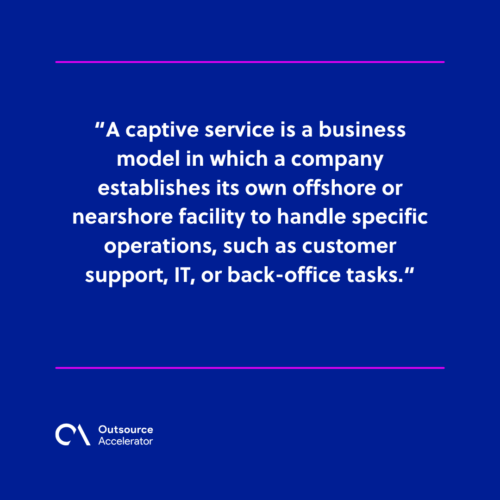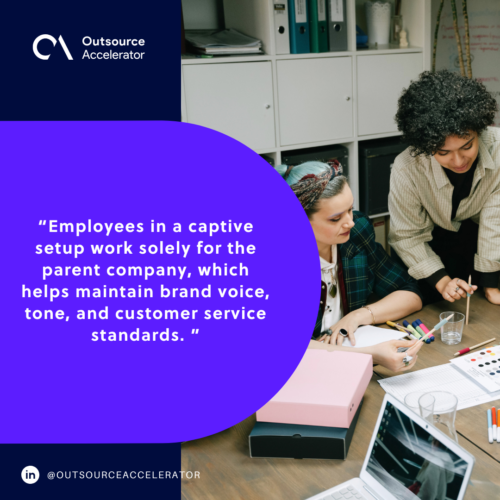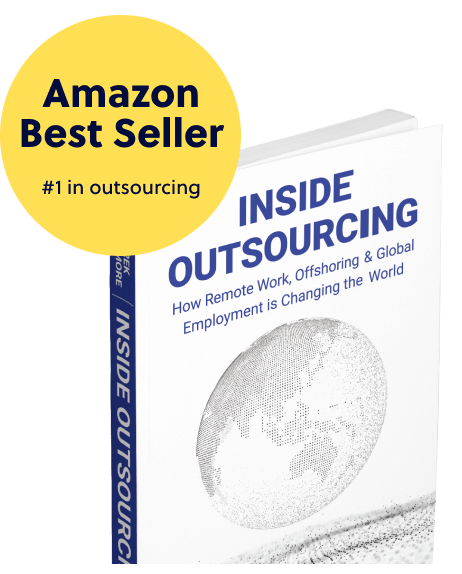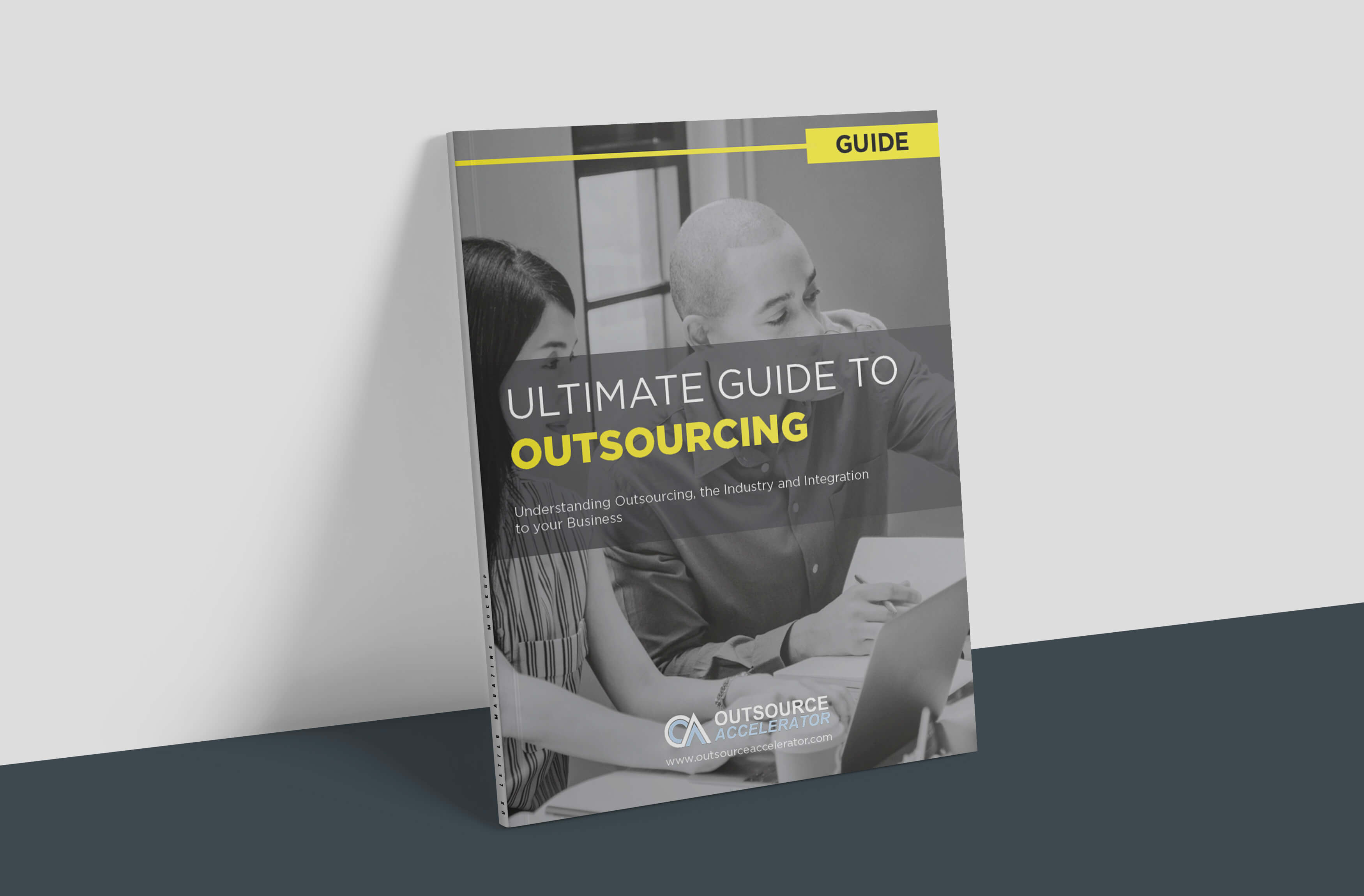Is a captive service right for your business expansion?

Businesses are always looking for strategic ways to optimize operations and cut unnecessary costs. Whether it’s outsourcing customer service or streamlining internal processes, the goal is to increase efficiency without sacrificing quality.
For example, a growing tech company might consider setting up its own offshore support center rather than relying on third-party vendors. This approach, known as a captive service, can offer greater control, brand alignment, and long-term cost advantages.
However, it also comes with challenges. In this article, we will examine what a captive service model entails, how it differs from traditional outsourcing, and whether it’s the right fit for your business expansion strategy.
What is captive service?
A captive service is a business model in which a company establishes its own offshore or nearshore facility to handle specific operations, such as customer support, IT, or back-office tasks.
Unlike outsourcing to a third-party provider, the business owns and controls the captive center. Here’s how it works:
- The company establishes a fully owned entity in a cost-effective location.
- It hires local talent directly under its brand.
- Operations follow the company’s internal standards, systems, and processes.
- Management retains full oversight of staffing, training, and performance.
Captive service centers often appeal to businesses looking for long-term growth, brand consistency, and greater control over sensitive and critical functions.

Captive service vs. Outsourcing
A lot of companies exploring expansion these days often face a critical decision: Should they build a captive service center or outsource to a third-party provider? Both models offer distinct advantages, depending on the company’s goals, budget, and level of control required.
The table below highlights the key differences between captive service and outsourcing:
| Aspect | Captive Service | Outsourcing |
| Ownership | Fully owned and operated by the parent company | Managed by an external service provider |
| Control | Full control over staff, processes, and infrastructure | Limited control over daily operations |
| Cost Structure | Higher upfront investment, lower long-term cost potential | Lower upfront cost, but fees may increase over time |
| Scalability | Slower to scale due to setup and staffing | Fast to scale with provider’s existing resources |
| Customization | High level of customization aligned with company goals | Often limited to provider’s standard service offerings |
| Risk Management | Direct responsibility for legal, compliance, and HR | Shared or transferred risk depending on the contract |
Knowing these differences enables businesses to select the most suitable model for achieving long-term success and operational efficiency.
7 Benefits of opting for a captive service
As businesses grow, so do their operational challenges. Managing customer support, IT services, or back-office tasks with limited internal resources can slow down progress and affect service quality.
Many companies consider outsourcing, but not all feel comfortable handing over control to a third-party provider. For those looking to expand while maintaining oversight, a captive service model offers a practical and scalable solution.
Here’s why:
1. Greater operational control
With a captive center, the parent company manages staffing, processes, and performance directly. This allows tighter control over day-to-day operations, compliance standards, and quality benchmarks.
Businesses can implement their own systems and workflows without relying on a third-party’s processes.
2. Improved data security
Captive centers provide better security management, especially for industries like healthcare, finance, and legal service, where handling sensitive data is critical.
Organizations can maintain full control over data access, storage, and compliance policies without depending on an external vendor’s infrastructure.
3. Stronger brand alignment
Employees in a captive setup work solely for the parent company, which helps maintain brand voice, tone, and customer service standards.
Training and internal communication can effectively reflect a company’s culture, leading to improved customer experiences and consistent service delivery.

4. Cost-efficiency over time
While building a captive service center requires a larger upfront investment, the long-term costs often become lower than outsourcing.
Companies avoid paying third-party markups and can structure their operations for maximum efficiency. In areas with lower labor costs, the savings multiply over time.
5. Talent development and retention
Captive centers give companies the ability to invest in their workforce, build loyalty, and reduce turnover. With direct hiring and management, businesses can develop career paths and training programs that boost performance and long-term retention.
6. Customizable operations
Compared to outsourcing, where services are limited to what the provider offers, a captive model allows full customization. Firms can quickly adapt their processes, scale specific functions, and deploy new technologies or workflows based on their evolving needs.
7. Strategic global presence
Establishing a captive center in another country can strengthen a company’s global footprint. It supports international growth and gives access to new markets, while still maintaining full control over business processes and customer engagement.
Captive service models offer a competitive edge to growing firms that value control, consistency, and scalability.
Captive service drives innovation for your business
A captive service model gives businesses the freedom to innovate without external limitations. With full control over teams, processes, and technology, companies can:
- Test new ideas
- Implement custom workflows
- Respond quickly to market changes
Direct oversight helps align innovation efforts with business goals, while consistent communication across internal teams drives smarter, faster decision-making.
As operations grow, the captive approach supports agility, creativity, and long-term value. These are essential elements for any business aiming to stay competitive and lead in its industry.







 Independent
Independent




